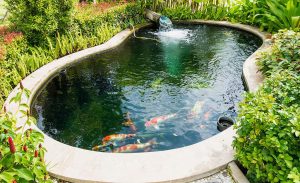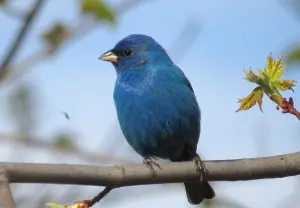If you are a bird lover living in the Peach State, you should know that Georgia is home to an incredible diversity of beautiful birds, from colorful songbirds to majestic birds of prey. With its varied landscapes ranging from the Appalachian Mountains to the Atlantic coast, Georgia provides habitat for over 400 bird species throughout the year.
But you don’t have to trek deep into the wilderness to spot some of Georgia’s most charming avian residents. Many of these birds can be found right in your own backyard, visiting feeders, birdbaths, and native plants. By learning to identify and appreciate the common birds that share your space, you can deepen your connection to nature and find joy in the simple pleasure of birdwatching.
In this post, we’ll introduce you to 30 of the most common and beloved backyard birds found in Georgia.
Related: 30 Common Backyard Birds That Are Found in Illinois
Take our short quiz
1. Northern Cardinal
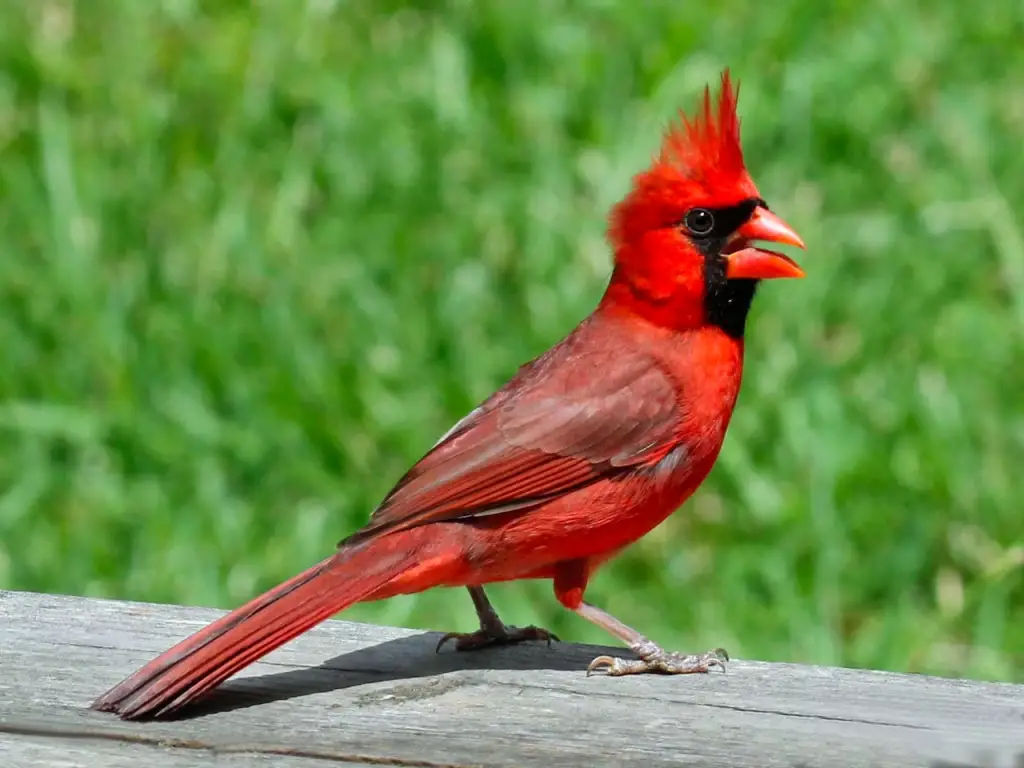
The Northern Cardinal is Georgia’s most iconic backyard bird and a favorite among bird enthusiasts. Males are unmistakable with their brilliant red plumage, black face mask, and jaunty crest. Females are more subdued but still lovely, with warm brown feathers accented by red tinges on the wings, tail, and crest.
Cardinals don’t migrate, so you can enjoy their company year-round in Georgia. They readily visit feeders and are especially fond of sunflower seeds. Planting dense shrubs like holly or dogwood will give cardinals a place to build their nests and take cover.
2. Carolina Chickadee

The Carolina Chickadee is a tiny but spunky bird that’s a common sight at Georgia feeders. With its black cap and bib, white cheeks, and soft gray back, this little bird resembles a miniature tuxedo. Its call is a distinctive “chick-a-dee-dee-dee” that’s easy to recognize.
Chickadees are acrobatic foragers, often hanging upside down to pluck insects and seeds from branches. They love suet and will also readily eat peanuts, sunflower seeds, and safflower seeds from feeders. Planting native trees and leaving dead wood for cavity nests will encourage chickadees to make a home in your yard.
3. Tufted Titmouse
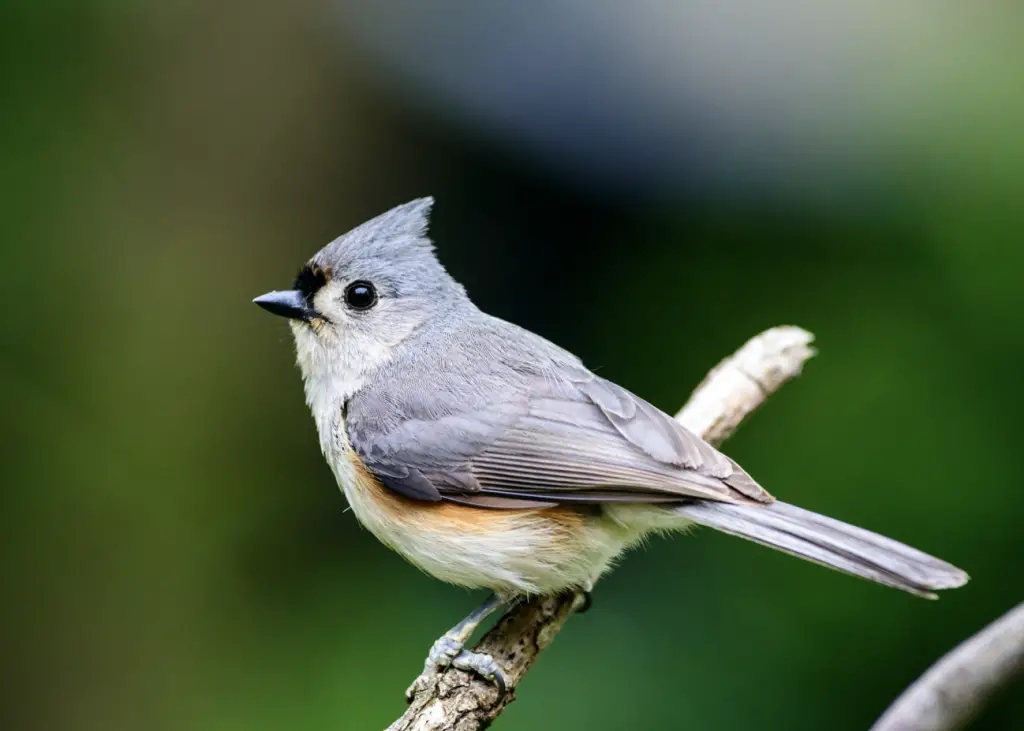
The Tufted Titmouse is another small, active bird that frequents Georgia’s backyard feeders. It has a gray back, white belly, and rusty flanks, with a jaunty crest that gives it a perky appearance. Its call is a loud, ringing “peter-peter-peter” that can be heard from a distance.
Titmice are often seen flitting back and forth from feeders, carrying away a seed to eat elsewhere. They love sunflower seeds, peanuts, and suet. Titmice will also use nest boxes, so consider putting one up to invite these charming birds to raise a family in your yard.
4. Carolina Wren
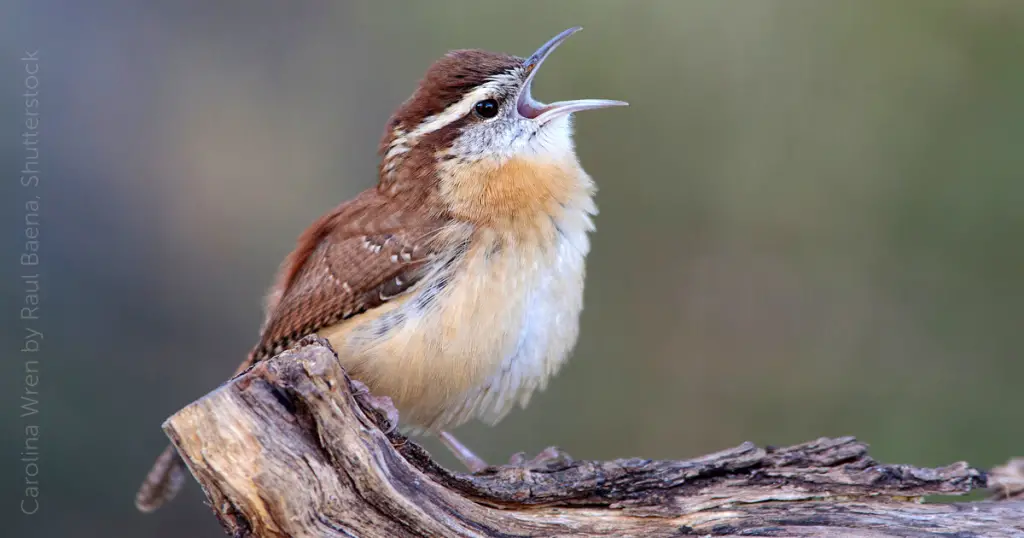
The Carolina Wren is a small, chunky bird with a big voice. It has a rich reddish-brown back, warm cinnamon underparts, and a bold white eyebrow stripe. Its tail is often cocked upward, giving it a jaunty appearance. The Carolina Wren’s song is a series of loud, rolling phrases that sound like “tea-kettle, tea-kettle, tea-kettle.”
Wrens are insectivores and don’t often visit seed feeders, but you can attract them by offering mealworms or creating a brush pile for foraging. They will also readily nest in birdhouses, preferring a rather messy, domed structure with a small entrance hole.
5. Blue Jay

The Blue Jay is a large, boldly marked songbird that’s a common sight in Georgia backyards. It has a blue back, wings, and tail, with a grayish-white belly and a black necklace. Its head is crowned with a striking blue crest. Blue Jays have a variety of loud, raucous calls, including a harsh “jay-jay” and a piercing scream.
Jays are intelligent, curious birds that are sometimes considered bullies at feeders. They love peanuts, sunflower seeds, and corn. Planting oak trees will provide jays with their favorite natural food – acorns. Blue Jays help spread oak forests by caching acorns in the ground, some of which sprout into new trees.
6. Red-bellied Woodpecker
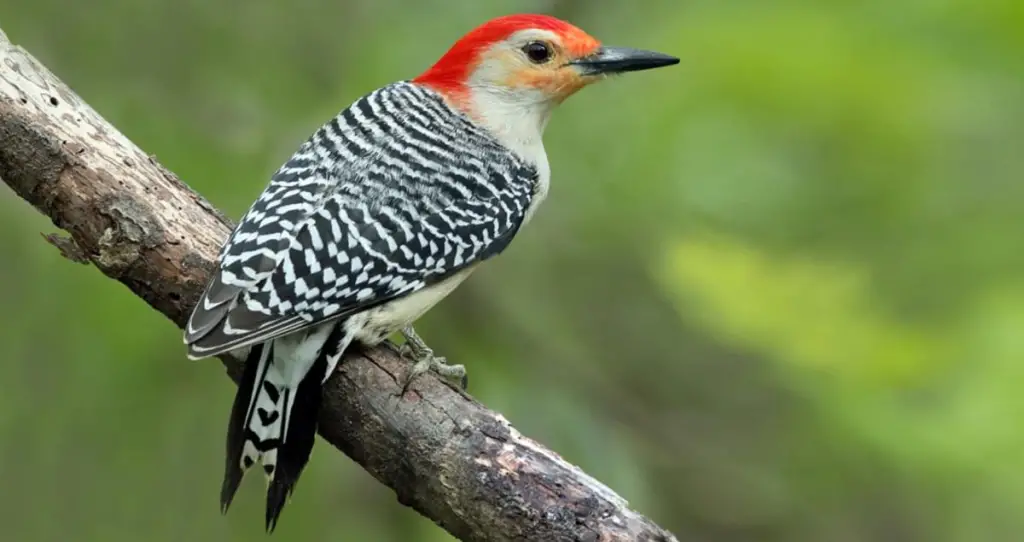
The Red-bellied Woodpecker is a medium-sized woodpecker with striking black-and-white barred upperparts and a pale belly. Contrary to its name, the red on this bird is actually on its head and nape, not its belly. Males have a red crown and nape, while females have a red nape and grayish crown.
Red-bellied Woodpeckers are frequent visitors to suet feeders and will also eat peanuts, fruit, and insects. They excavate nest holes in dead trees or large branches, so consider leaving dead wood in your yard to attract these handsome birds.
7. American Crow

The American Crow is a large, glossy black bird with a heavy bill and fan-shaped tail. It’s an intelligent, adaptable species that’s found in a variety of habitats, from rural farmlands to urban parks. Crows have a variety of calls, including a hoarse “caw-caw” and a rattling “ruk-ruk-ruk.”
Crows are omnivorous and opportunistic, eating everything from insects and small animals to fruit, grain, and garbage. They don’t often visit bird feeders, but you might attract them by offering corn, peanuts, or even dog food. Crows are highly social and form large communal roosts in winter.
8. Mourning Dove
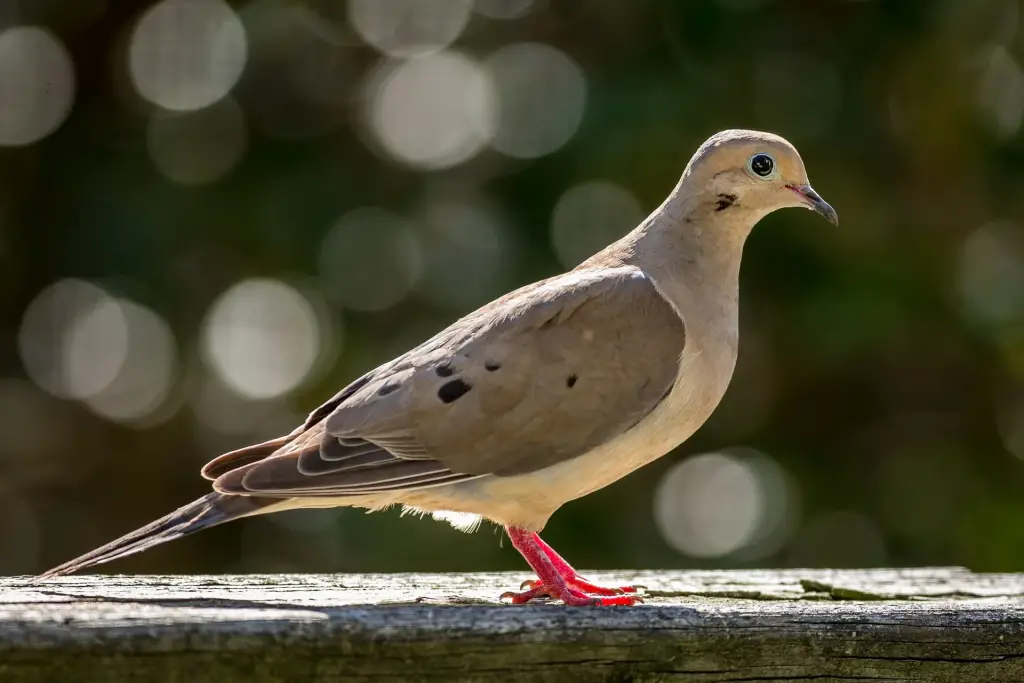
The Mourning Dove is a plump, medium-sized bird with a small head and long, pointed tail. It has grayish-brown upperparts, pale pinkish underparts, and black spots on the wings. Its mournful cooing call is a familiar sound in Georgia backyards.
Doves primarily eat seeds and will readily visit ground feeders or platform feeders. They prefer millet, cracked corn, and sunflower seeds. Doves often nest in the crotches of trees or on horizontal branches, so consider providing nesting platforms to encourage them to raise young in your yard.
9. Downy Woodpecker
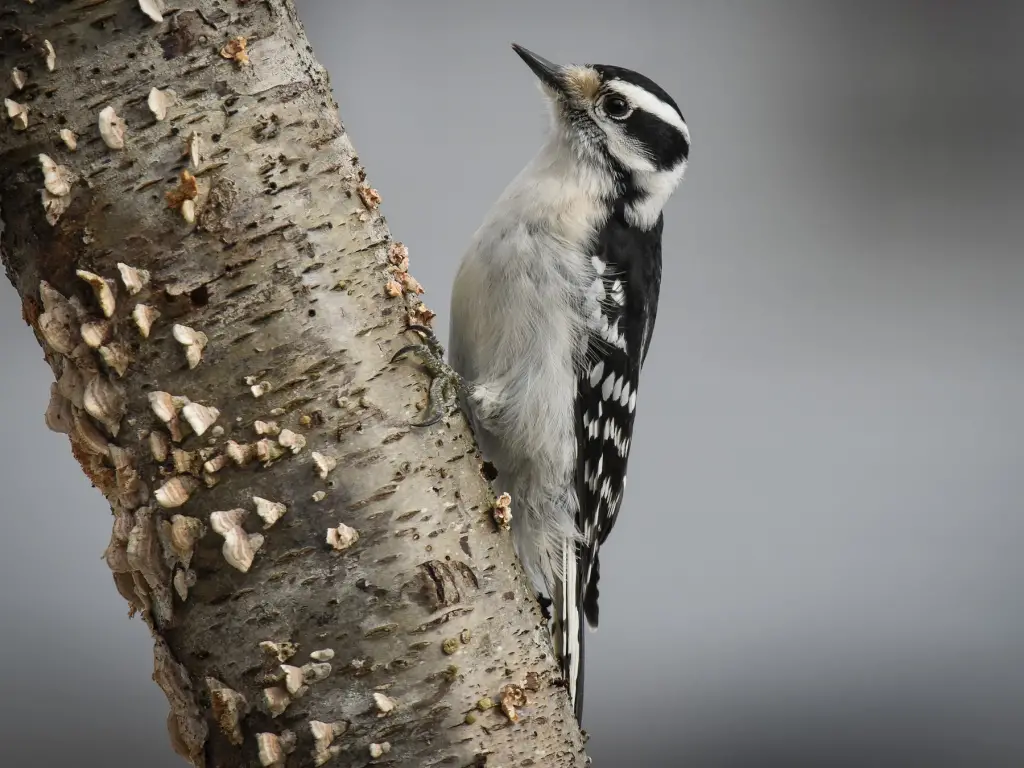
The Downy Woodpecker is a small, black-and-white woodpecker with a short bill and white back. Males have a small red patch on the back of the head, while females lack the red. Downies are often seen hitching along tree trunks and branches, probing for insects with their bills.
Downy Woodpeckers love suet and will also visit feeders for sunflower seeds, peanuts, and millet. They nest in dead trees or branches, excavating a new cavity each year. Leaving dead wood in your yard will provide these little woodpeckers with both food and housing.
10. Eastern Bluebird
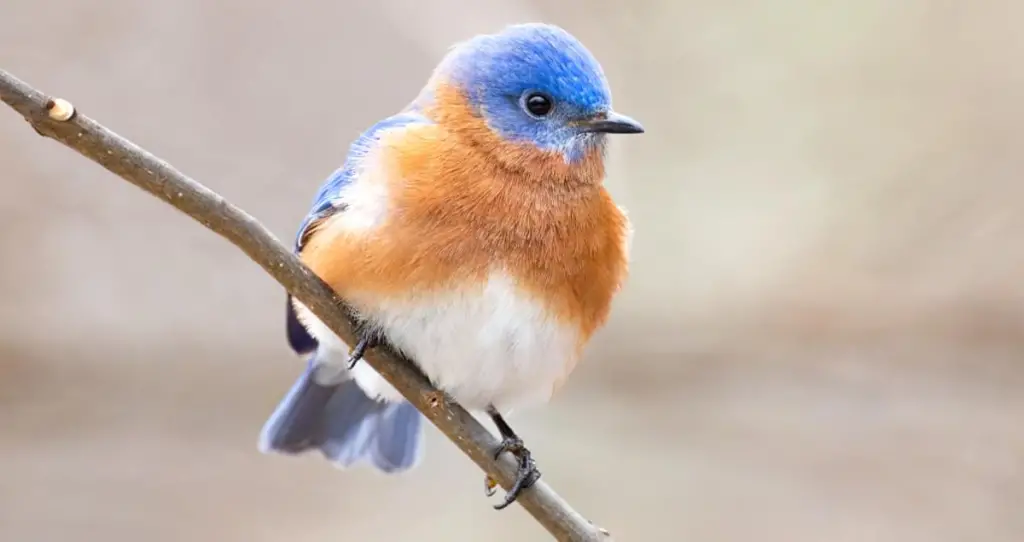
The Eastern Bluebird is a small thrush with a big, rounded head, plump body, and alert posture. Males are a brilliant royal blue on the back and head, with a warm reddish-brown breast and white belly. Females are grayish above with a subdued blue tinge in the wings and tail.
Bluebirds primarily eat insects, so they don’t typically visit seed feeders. To attract them, offer mealworms in a shallow dish or tray feeder. Bluebirds are cavity nesters and will readily use nest boxes, especially if you place them in open, grassy areas with scattered trees.
11. Northern Mockingbird
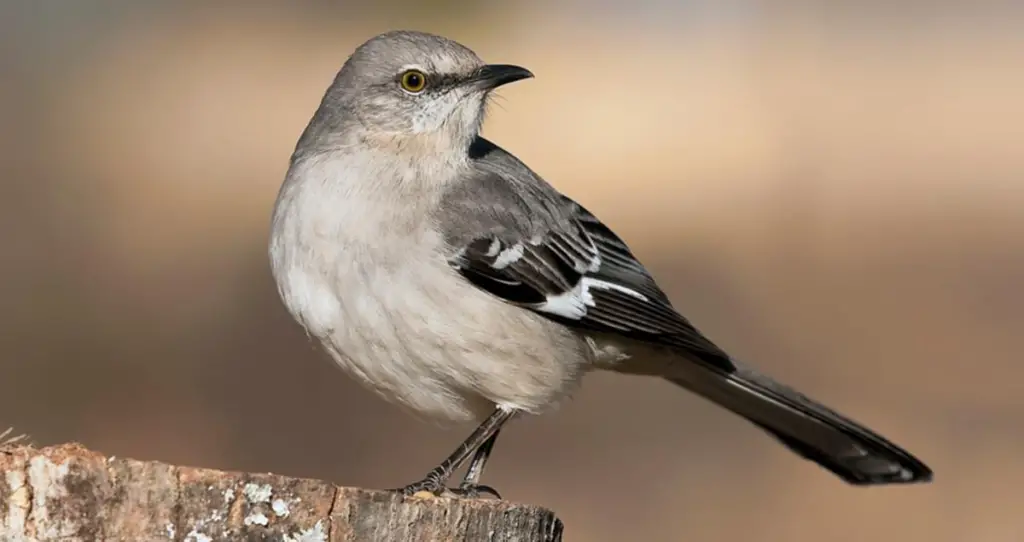
The Northern Mockingbird is a slender, gray bird with a long tail and white wing patches that flash in flight. It has a small head, a thin bill, and pale eyes. Mockingbirds are known for their incredible vocal abilities, able to mimic the songs of other birds as well as man-made sounds like car alarms.
Mockingbirds don’t often visit feeders, but you can attract them by planting fruit trees and shrubs like elderberry, holly, or mulberry. They also love to forage for insects in open lawns, so consider leaving some unmowed areas in your yard.
12. Eastern Towhee
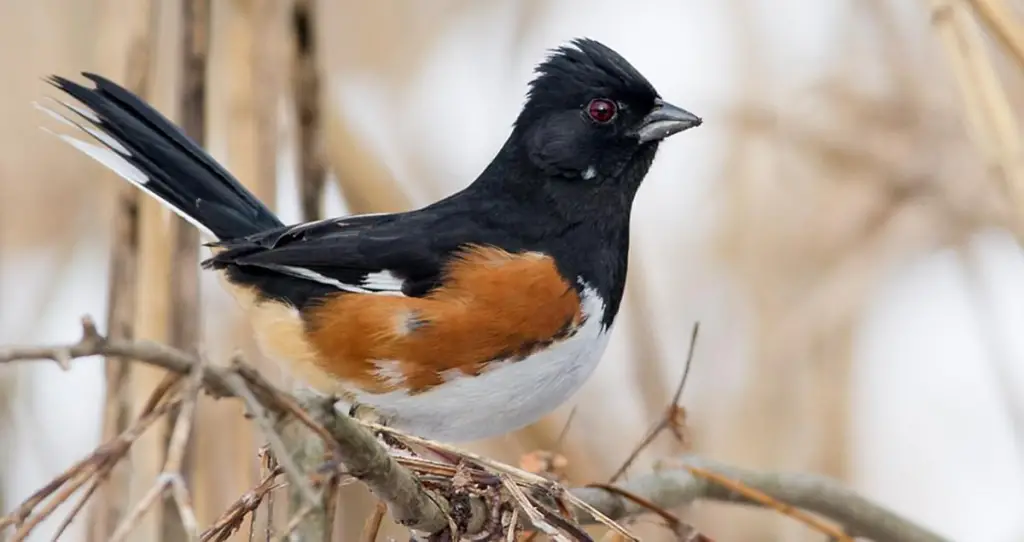
The Eastern Towhee is a large, striking sparrow with a black head and upper back, warm rufous sides, and a white belly. Its eyes are red, and it has a thick, conical bill. Females have the same pattern but are brown whereas males are black. Towhees are often heard scratching in the leaf litter, making a distinctive “toe-hee” call.
Towhees will visit ground feeders for seeds like millet, cracked corn, and sunflower. They also love to forage in brush piles, so consider creating one in a corner of your yard. Planting dense, low shrubs will give towhees a place to nest and find cover.
13. House Finch
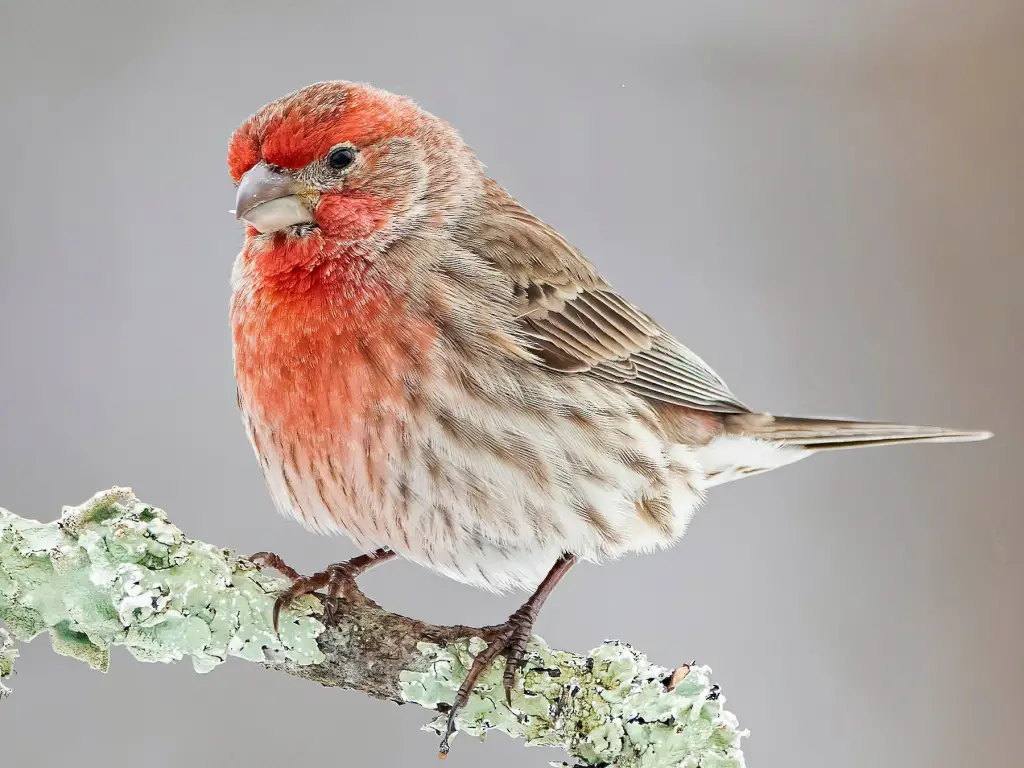
The House Finch is a small, chunky finch with a large head and short, conical bill. Males are rosy red around the face and upper breast, with streaky brown back and wings. Females are plain grayish-brown with thick, blurry streaks and no red. House Finches have a fast, warbling song that’s often described as “cheerful.”
House Finches are common feeder birds and love black oil sunflower seeds. They’ll also eat safflower, millet, and nyjer. If you have fruit trees or berry bushes in your yard, you may see House Finches feeding on the fruit or blossoms.
14. Eastern Phoebe
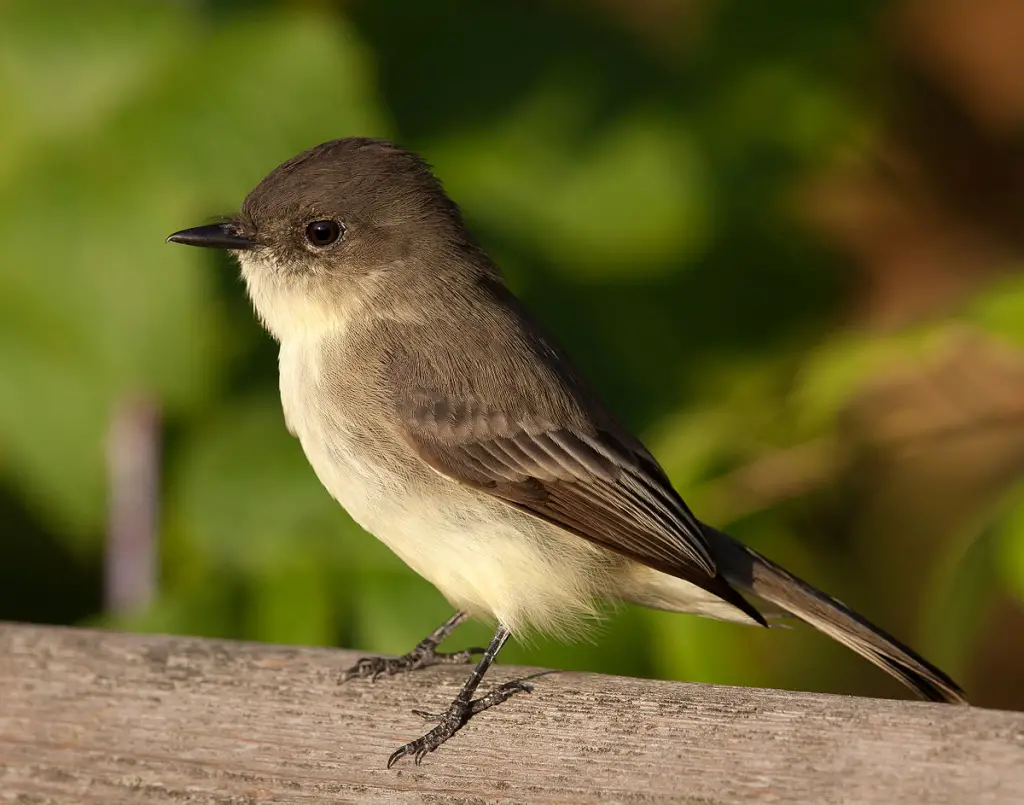
The Eastern Phoebe is a small, plump flycatcher with a large head and medium-length tail. It has brownish-gray upperparts, pale underparts, and a dusky wash on the sides of the breast. Its most distinctive feature is its constant tail-wagging, even when perched. Phoebes have a raspy, two-parted call that sounds like “fee-bee.”
As flycatchers, phoebes primarily eat flying insects and don’t come to seed feeders. To attract them, try leaving some dead branches or small trees in your yard for perching. Phoebes often build mud nests on human-made structures like eaves, bridges, or porch lights.
15. American Robin

The American Robin is a large, common thrush with gray-brown upperparts, warm orange underparts, and a bold white throat. It has a yellow bill and broken white eye rings. Males and females look similar, but females are paler overall. Robins are often seen hopping on lawns, cocking their heads to listen for worms.
Robins don’t eat seeds, so don’t expect to see them near feeders. Instead, you can attract them by offering chopped fruit, berries, or mealworms on the ground. Robins also love to bathe, so consider adding a birdbath to your yard.
16. White-breasted Nuthatch
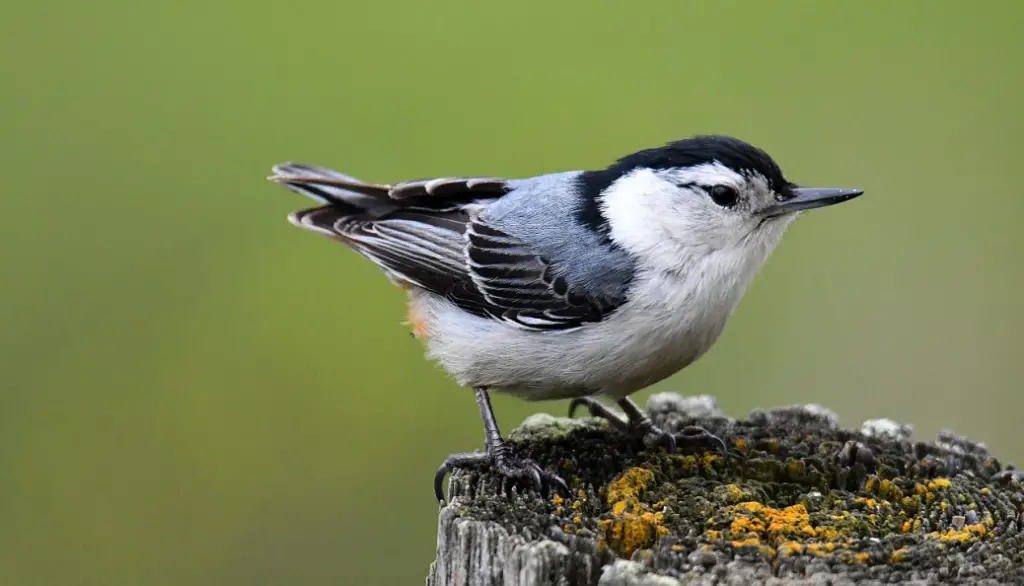
The White-breasted Nuthatch is a small, compact bird with a large head, short tail, and powerful bill. It has a blue-gray back, a stark white face and underparts, and a black cap. Nuthatches are often seen creeping headfirst down tree trunks, probing for insects in the bark.
Nuthatches love suet, peanuts, and sunflower seeds. They’ll often grab a seed from a feeder and fly off to wedge it in a crevice and hammer it open. Nuthatches nest in tree cavities, so consider putting up a nest box to attract a breeding pair.
17. Brown-headed Nuthatch
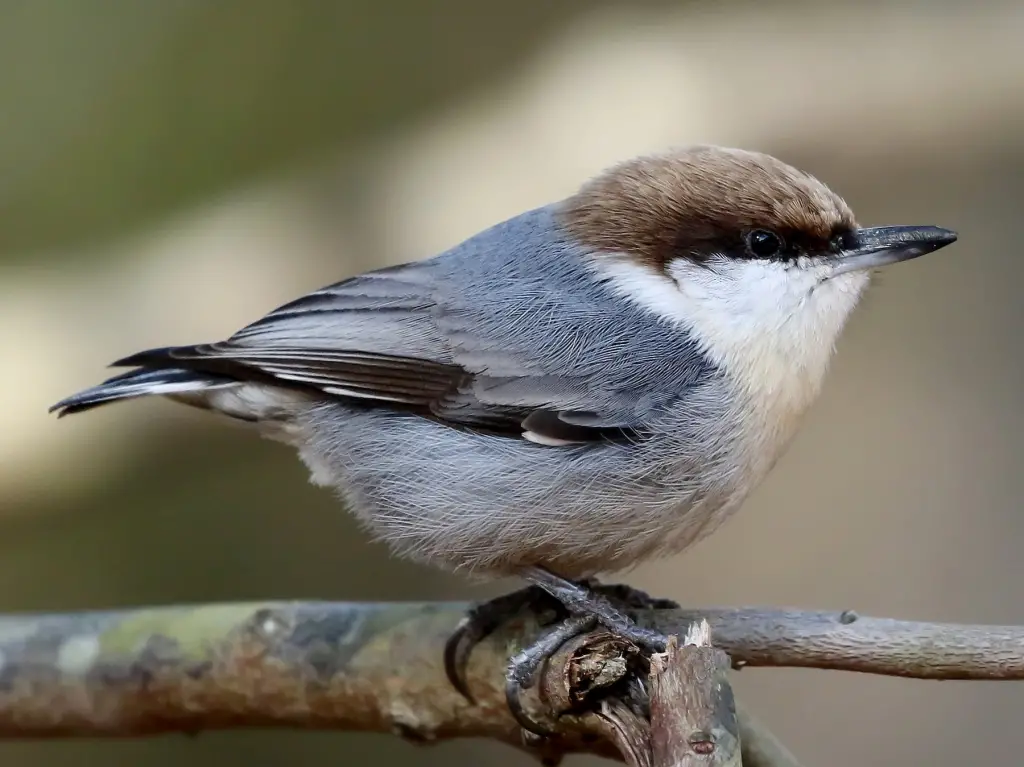
The Brown-headed Nuthatch is a tiny, compact bird with a large head, very short tail, and long, pointed bill. It has a brown cap, grayish back and wings, and whitish underparts. This nuthatch is found primarily in pine forests and is often seen in small flocks, chattering constantly.
Brown-headed Nuthatches love pine seeds and insects. You can attract them by offering suet, sunflower seeds, and peanuts. They’ll also readily use nest boxes, especially if you fill them with pine needles or wood chips.
18. Chipping Sparrow

The Chipping Sparrow is a small, slender sparrow with a long tail and medium-sized bill. It has a rusty cap, white eyebrow, black eye line, and grayish underparts. Its back is brown with dark streaks, and it has two white wing bars. Chipping Sparrows have a trilling song that sounds like a sewing machine.
Chipping Sparrows love to eat small seeds, especially grass seeds. You can attract them with offerings of millet, nyjer, or black oil sunflower seeds scattered on the ground or in low-platform feeders. They often nest in small trees or shrubs in open, grassy areas.
19. Pine Warbler
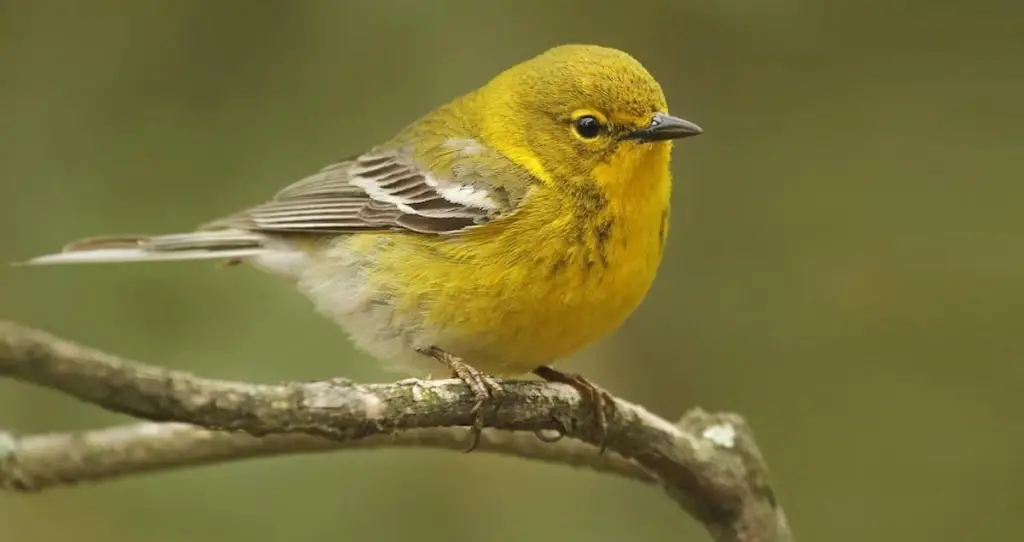
The Pine Warbler is a small, plump songbird with a short tail and thin, pointed bill. It has olive-green upperparts, yellow throat and breast, and white belly. Males are brighter yellow than females. As its name suggests, the Pine Warbler is closely associated with pine forests.
Pine Warblers primarily eat insects and pine seeds. They don’t often visit feeders, but you may attract them with suet, peanut butter, or mealworms. Planting pine trees in your backyard will provide these warblers with food and nesting sites.
20. Brown Thrasher
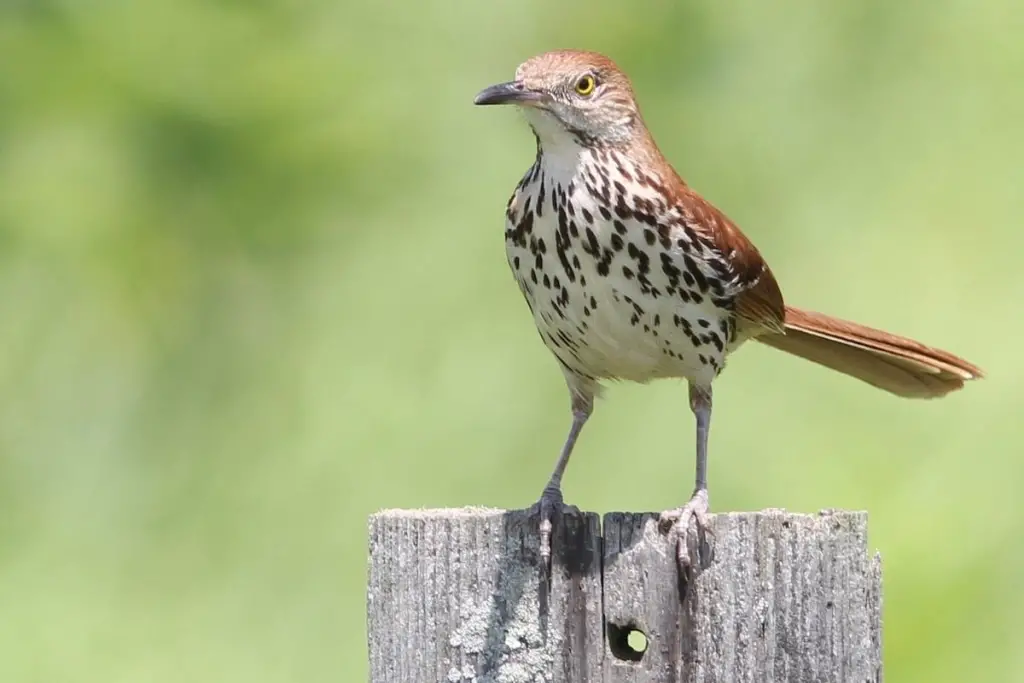
The Brown Thrasher is a large, boldly patterned songbird with a long tail and curved bill. It has reddish-brown upperparts and heavily streaked underparts. Its face is grayish-brown with a white eye ring and dark streaks. Brown Thrashers are accomplished singers, with a repertoire of over 1,000 song types.
Brown Thrashers primarily eat insects and fruit. They don’t often visit feeders, but you may attract them with offerings of chopped fruit, berries, or mealworms. Thrashers love to forage in brush piles, so consider creating one in your yard.
21. American Goldfinch
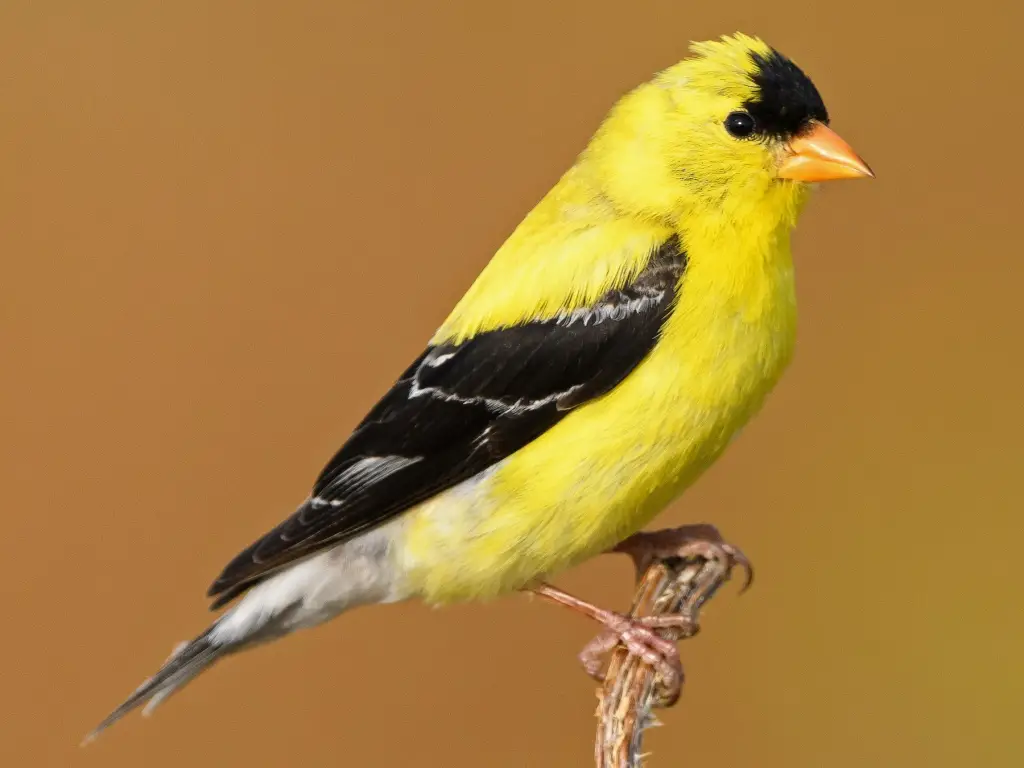
The American Goldfinch is a small, acrobatic finch with a short, conical bill and slightly notched tail. Males in breeding plumage are bright yellow with a black cap and wings. Females and non-breeding males are more olive-brown above and dull yellow below. Goldfinches have a bouncy, undulating flight pattern.
Goldfinches love Nyjer and sunflower seeds. They’re often seen perching on tall, seedy flowers like thistles and coneflowers. To attract goldfinches, plant native seed-bearing flowers and offer nyjer or sunflower seeds in specialized finch feeders.
22. Red-winged Blackbird
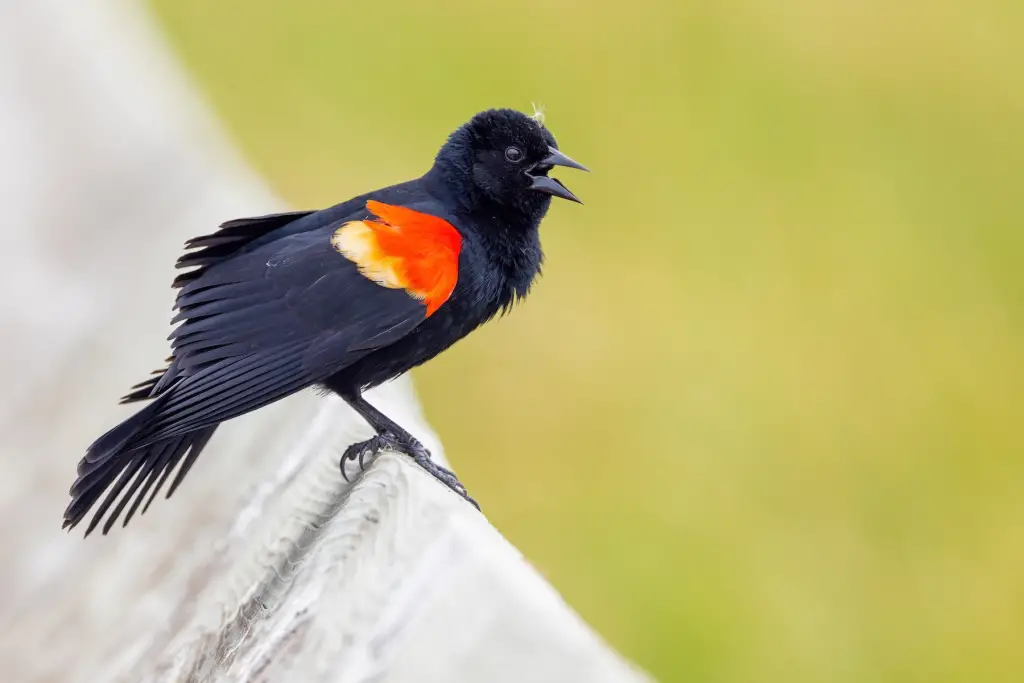
The Red-winged Blackbird is a medium-sized songbird with a stocky body and long, rounded tail. Males are glossy black with bright red and yellow shoulder patches. Females are streaky brown with a pale throat and eyebrows. Red-winged Blackbirds are often seen perching on cattails or reeds in marshes and wetlands.
Red-winged Blackbirds primarily eat insects and seeds. They may visit feeders for cracked corn, sunflower seeds, and millet. To attract them, plant native grasses and seed-bearing flowers, or leave some standing dead corn in your garden over winter.
23. Eastern Kingbird

The Eastern Kingbird is a medium-sized flycatcher with a large head, upright posture, and square-tipped tail. It has dark gray upperparts, white underparts, and a black tail with a white tip. Its head is black with a concealed orange crown patch. Kingbirds are often seen perching on utility lines or fences, sallying out to catch flying insects.
As flycatchers, kingbirds rarely visit feeders. To attract them, try leaving some dead branches or small trees in your yard for perching. Kingbirds may also be drawn to water features like birdbaths or ponds.
24. Indigo Bunting
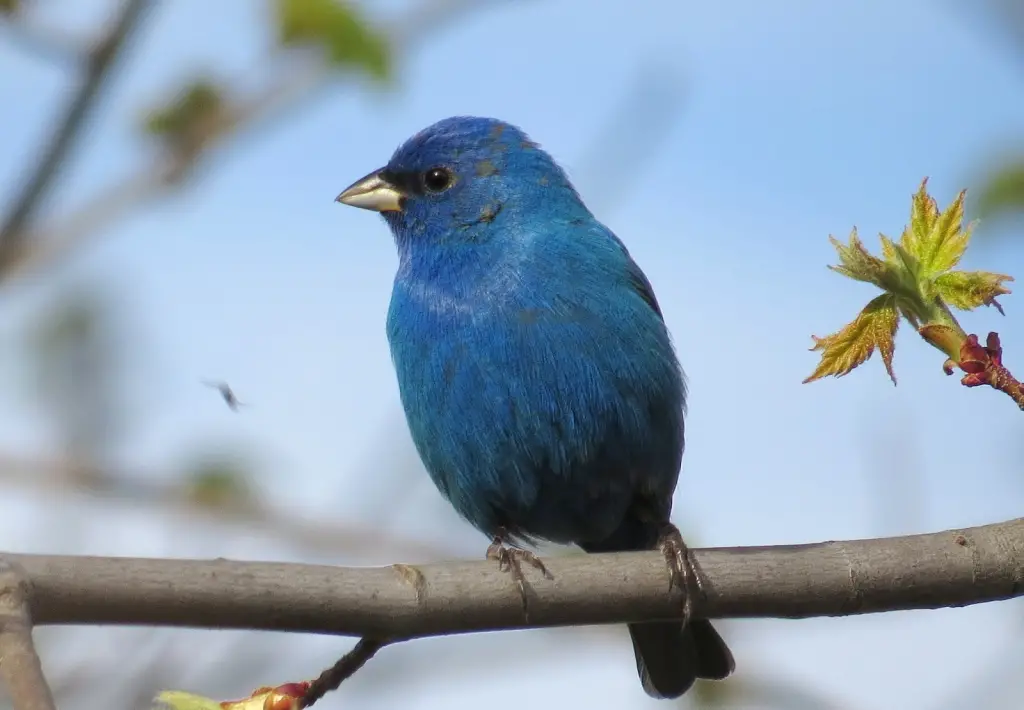
The Indigo Bunting is a small, stocky songbird with a short, thick bill and short tail. Males are a brilliant blue all over, with slightly darker wings and tail. Females are brown with faint streaking on the breast and a hint of blue in the wings and tail. Indigo Buntings have a cheerful, paired song that sounds like “what what where where see it see it.”
Indigo Buntings primarily eat insects and seeds. They may visit your backyard for small seeds like nyjer and millet. To attract them, plant native seed-bearing flowers and grasses, or offer seeds on the ground.
25. Ruby-throated Hummingbird
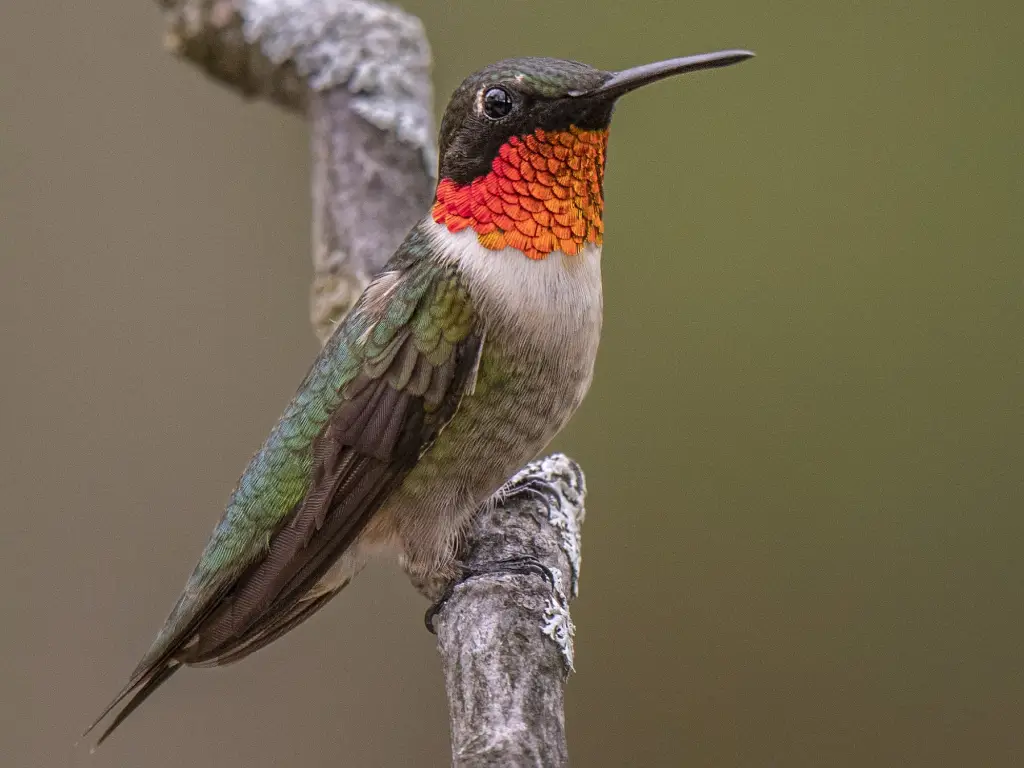
The Ruby-throated Hummingbird is a tiny bird with a slender bill, short wings, and a forked tail. Males have a brilliant iridescent red throat, greenback, and white underparts. Females lack the red throat and have more white on the throat and tail. Ruby-throated Hummingbirds are the only breeding hummingbird species in the eastern U.S.
To attract hummingbirds, hang nectar feeders filled with a solution of four parts water to one part white sugar. You can also plant tubular flowers like bee balm, cardinal flowers, and trumpet honeysuckle. Hummingbirds are fiercely territorial and may chase each other away from feeders and flowers.
26. Barn Swallow

The Barn Swallow is a sleek, streamlined bird with long, pointed wings and a deeply forked tail. It has steel-blue upperparts, rust-colored underparts, and a chestnut throat and forehead. Barn Swallows are often seen swooping and gliding over fields and meadows, catching insects in midair.
Barn Swallows primarily eat flying insects and don’t visit feeders. To attract them, consider putting up a nest platform or open-fronted birdhouse under the eaves of your barn or shed. Barn Swallows build mud nests and often return to the same nesting site year after year.
27. Song Sparrow

The Song Sparrow is a medium-sized sparrow with a long, rounded tail and thick, seed-cracking bill. It has a brown back with dark streaks, white underparts with heavy brown streaks, and a dark spot in the center of the breast. Song Sparrows are known for their rich, varied songs that often start with three clear notes.
Song Sparrows primarily eat seeds and insects. They may visit for millet, cracked corn, and sunflower seeds. To attract them, plant native seed-bearing grasses and flowers, or create a brush pile for cover and foraging.
28. Great Crested Flycatcher
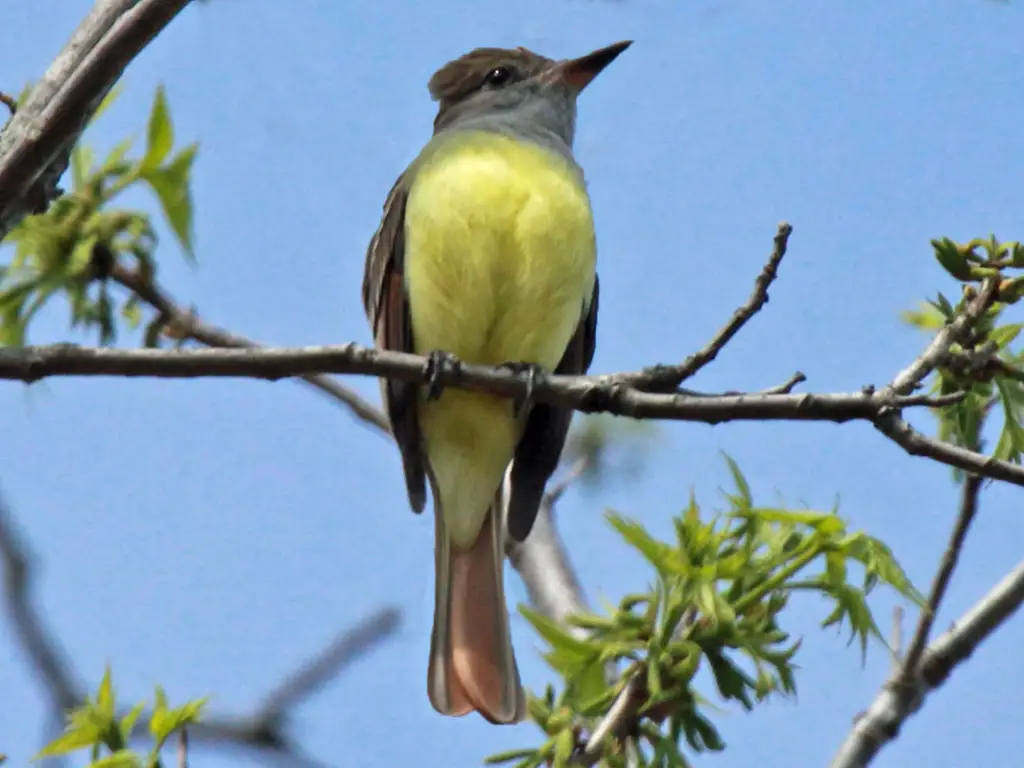
The Great Crested Flycatcher is a large, stocky flycatcher with a big head, upright posture, and long tail. It has olive-brown upperparts, yellow underparts, and a rust-colored tail. Its head is gray with a slight crest and a pale throat. Great Crested Flycatchers have a loud, whistling song that sounds like “wheep wheep whee-eep.”
As flycatchers, Great Crested Flycatchers primarily eat insects and don’t visit feeders. To attract them, consider putting up a nest box on a woodland edge or open area. These flycatchers often use snakeskin in their nests, so you may find pieces of shed snakeskin near active nests.
29. Yellow-rumped Warbler

The Yellow-rumped Warbler is a small, plump songbird with a short, thin bill and a short, notched tail. It has gray upperparts with a yellow rump patch, white underparts with black streaks, and a yellow crown and sides. In winter, Yellow-rumped Warblers are duller gray-brown with a pale throat and bold white tail patches.
Yellow-rumped Warblers primarily eat insects, but they also eat fruit and suet in winter. To attract them, offer suet cakes or peanut butter mixed with cornmeal in wire mesh feeders. You can also plant native fruit-bearing trees and shrubs like dogwood, serviceberry, and Virginia creeper.
30. Pileated Woodpecker
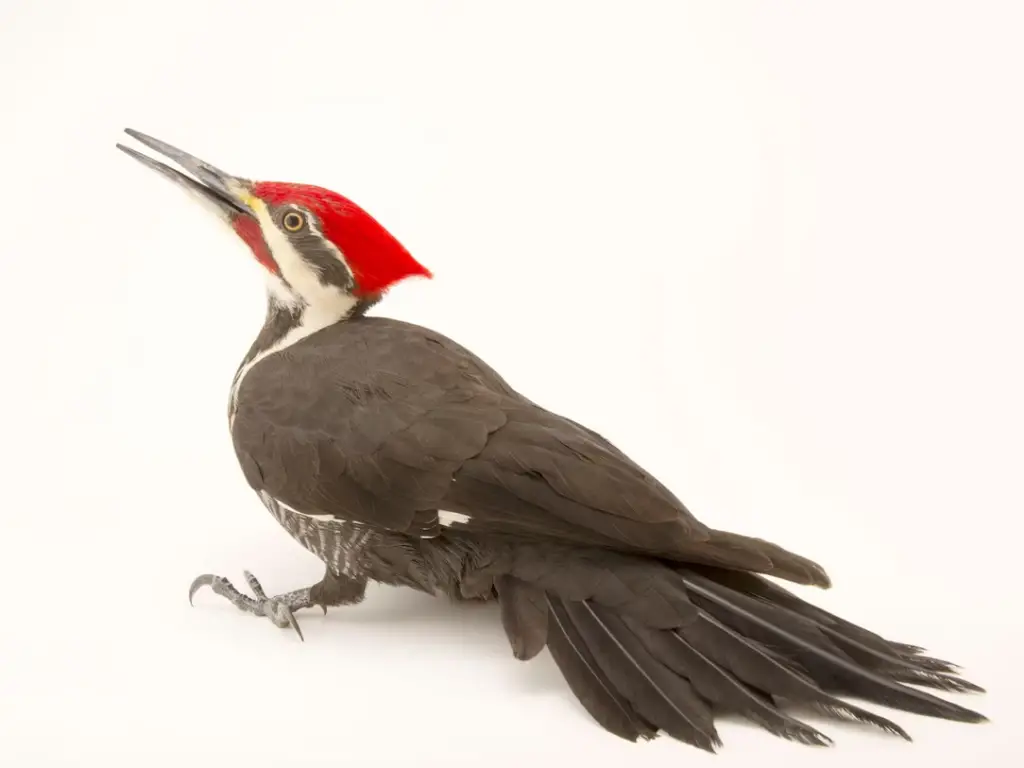
The Pileated Woodpecker is a large, striking bird with a long, chisel-like bill and a prominent red crest. It has black upperparts with white stripes on the face and neck and black underparts with white bars on the wings. Males have a red cheek stripe that females lack. Pileated Woodpeckers are often heard drumming on dead trees with their powerful bills.
Pileated Woodpeckers primarily eat carpenter ants and other wood-boring insects, but they will also eat suet and nuts. To attract them, hang suet cakes or put out a platform feeder with shelled peanuts or other nuts. Leave dead trees or snags standing in your yard to provide these woodpeckers with natural foraging and nesting sites.
By creating a welcoming habitat for birds, you’ll be rewarded with the joy of watching these fascinating creatures up close and the satisfaction of knowing you’re helping to support local bird populations.
Conclusion
Georgia is home to a diverse array of backyard birds, each with its own unique characteristics and charms. From the brilliant red of the Northern Cardinal to the acrobatic antics of the American Goldfinch, these feathered friends add beauty, song, and life to our outdoor spaces.
Remember that you need to entice these birds with feeds placed strategically around your backyards. Once they are used to meeting some feeds, you should see the birds coming in as often for a daily bite of what you offer.



